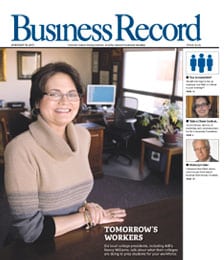Available tax credits lack sufficient number of investors

As the economy stagnates, an abundance of available tax credits coupled with a diminished pool of investors is causing concern, developers say.
“The development community is optimistic, but very concerned that the pool for federal and state historic tax credits will have a diminished number of investors as well,” said state Sen. Jack Hatch, founder of Hatch Development Group.
Hatch said he believes a decision by the Iowa House of Representatives last month to increase the annual cap on historic tax credits to $50 million from $20 million is a “great economic development initiative.” But due to the dwindling number of investors in today’s economic climate, Hatch said a rising number of applications for historic and low-income housing tax credits could create a “potentially huge problem.”
According to the Iowa Finance Authority (IFA), 43 applications for low-income housing tax credits have been submitted since Oct. 31, 2008, and 23 have been awarded credits. Carla Pope, IFA’s director of affordable rental production, said she is unaware of any projects that have secured buyers for those credits. Some developers, she said, have asked IFA to delay the allocation of the credits, due to the difficulty of finding investors.
“In today’s economy, many investors do not need tax credits,” said Steve Niebuhr, senior vice president of construction and management services with Hubbell Realty Co., which is pursuing state and federal historic tax credits for two affordable housing projects downtown.
Niebuhr said traditional investors, such as large financial institutions and insurance companies, are suffering from decreased profits or even losses, lessening their need to offset taxable income through the purchase of tax credits. “If you’re not making any money, you can’t use the credits,” he said.
“They already have enough losses to reduce their tax liability,” said Jackie Nickolaus, vice president of development for Sherman and Associates Inc., referring to the challenge of securing investors.
Nickolaus, however, said historic tax credits may be more attractive to buyers than low-income housing tax credits, as the tax liability is spread out over five years as opposed to 10 years.
Another concern is how the law of supply and demand is affecting the value of tax credits.
With more sellers than buyers, Niebuhr said, investors don’t have to pay as much on the dollar. “It’s become a tax credit buyer’s market,” he said.
“Current prices for the local industry have dropped significantly,” said Ryan Galloway, Hatch Development’s chief financial officer, adding that the developer’s historic rehabilitation of 1312 Locust St., completed last June, would not have been “feasible” if the process was starting today. The firm locked in American Family Insurance and Principal Financial Group Inc., the project’s federal and state historic tax credit investors, respectively, at 90 cents on the dollar in late 2007.
“It only worked because we were able to lock in those higher prices” saving the company nearly $3 million on the $6.2 million build-out, Galloway said.
“If you could even find a buyer” in today’s market, he said, “it would probably be closer to 50 to 60 cents on the dollar.”
Nickolaus said she has heard that the value of low-income housing tax credits has dropped to 50 to 75 cents on the dollar.
“There’s a lot more unpredictability with low-income housing tax credits, which usually translates to a lower amount,” she said.
Sherman hopes to sell its historic tax credits for the renovation of the Rumely Building at 104 S.W. Fourth St., Des Moines, for 82 cents on the dollar, but nothing has been finalized.
“This is an exceptional year,” Hatch said, referring to an additional $42 million in low-income housing tax credits allocated since October 2008, in response to significant flooding and tornados in Iowa last year. An additional $21 million will be allocated to IFA on Jan. 1, 2010. Including the normal allocation of $6 million per year for 2009 and 2010, that translates into a potential tax credit pool of $750 million spread out over the next 10 years.
“This is all out of balance,” Hatch said. “There is an abundance of tax credits and a dwindling number of investors. Usually it’s just the opposite.”
“There are enough projects, but not enough investors in this economy,” he said.
“Developers like us have to figure out how to fill that gap.”







